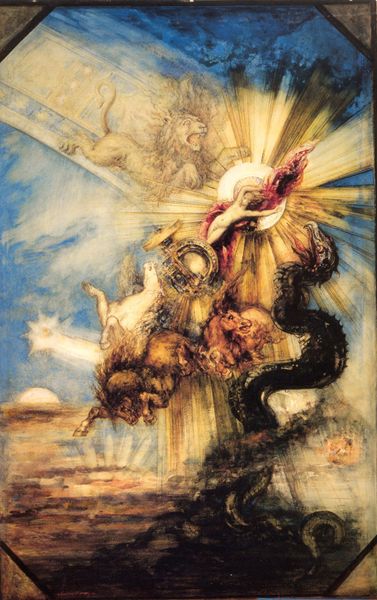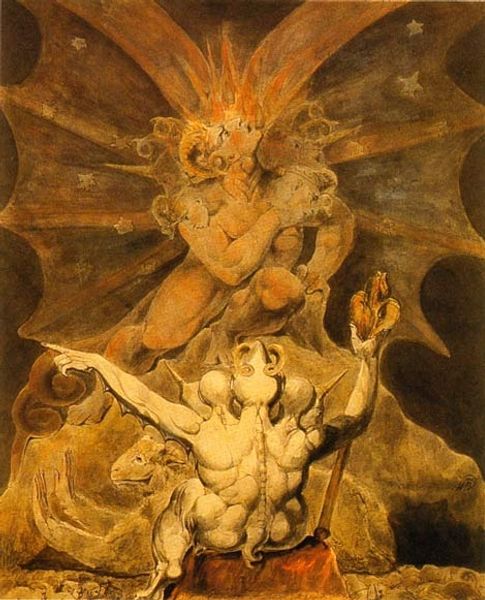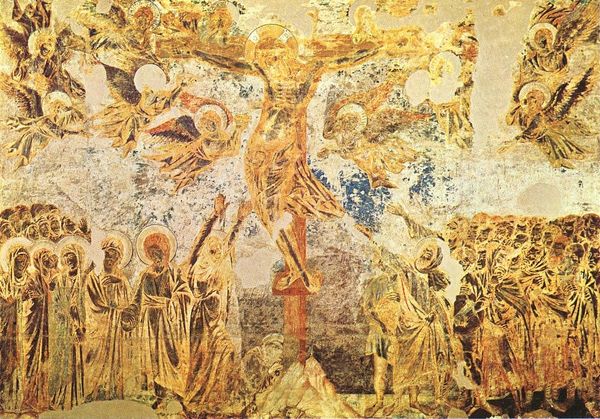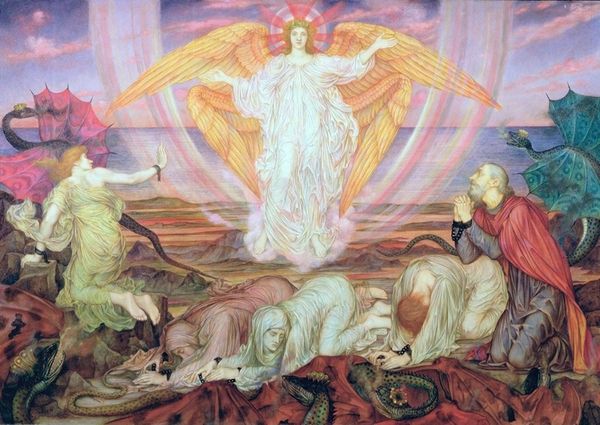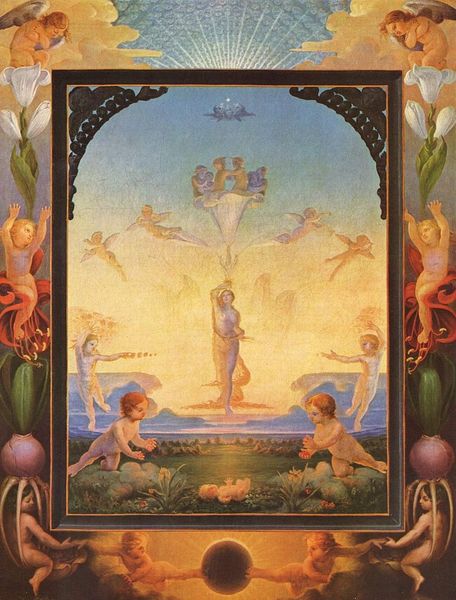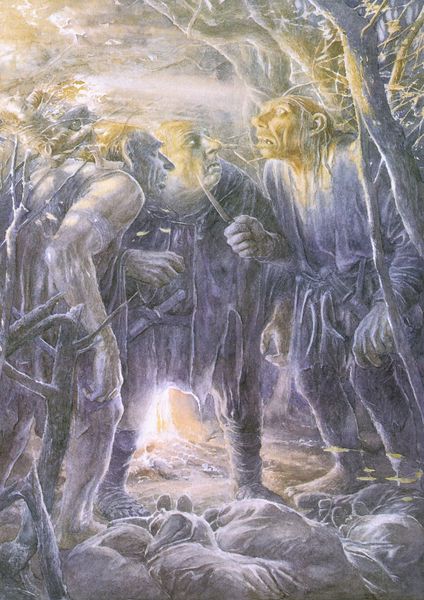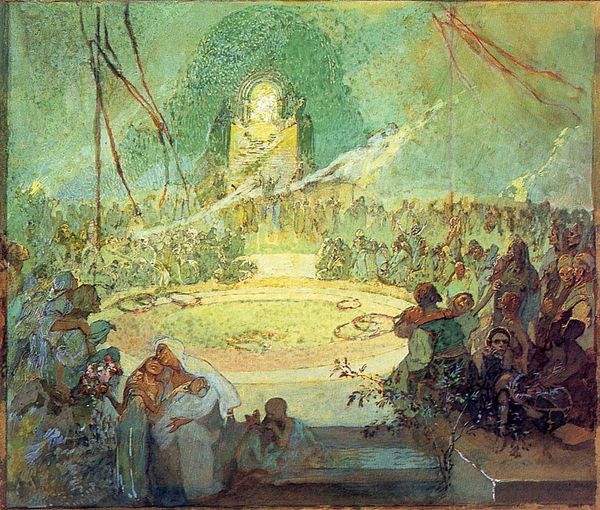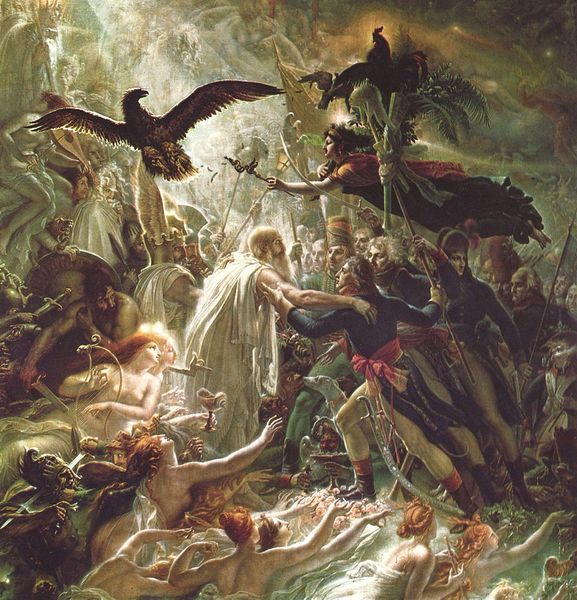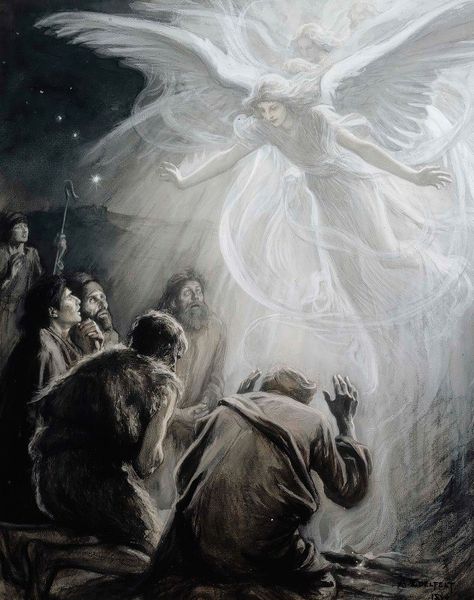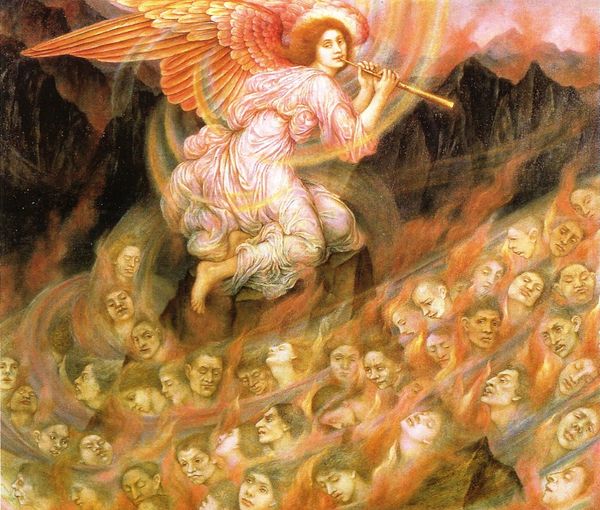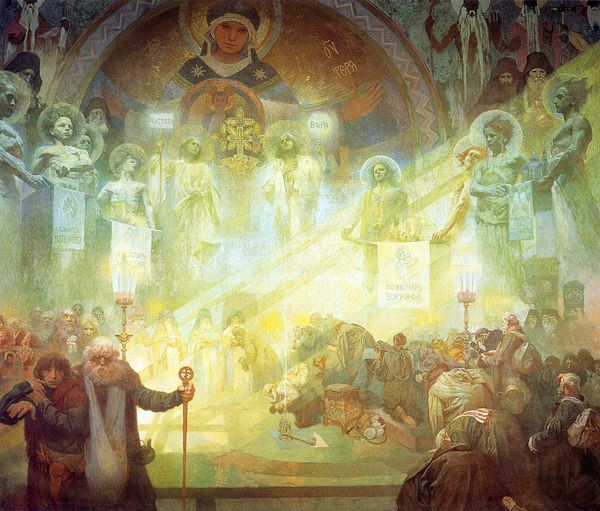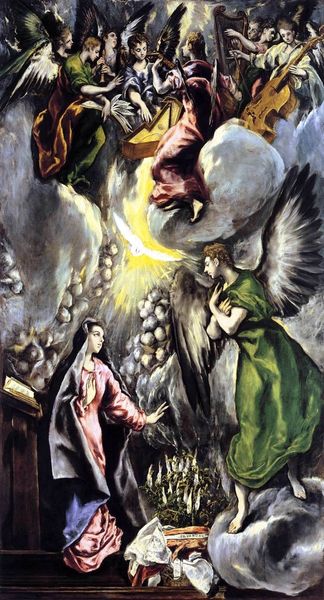
Dimensions: 405 x 480 cm
Copyright: Public domain
Curator: Here we have Alphonse Mucha’s tempera painting, "The Apotheosis of the Slavs," created in 1925. What's your immediate response to this rather ethereal work? Editor: My goodness, it’s like staring into a beautiful, hopeful dream. The light, the figures rising…it feels positively buoyant. And yet, a deep sense of history seems woven through it all. Curator: Exactly. Mucha intended this as a symbolic representation of Slavic unity and liberation. Following World War I and the formation of Czechoslovakia, such works were popular and a testament to newfound independence and identity. He merges the real and allegorical. Editor: Allegorical for sure. Is that figure at the top supposed to represent some kind of… Slavic god, or the spirit of the Slavic people? He's almost like a sun god, all bathed in gold! Curator: It represents a deified, collective Slavic spirit, arms outstretched in protection. The figures below, rendered with realistic detail, seem to be receiving that benediction. Note, too, how Mucha uses landscape symbolism, placing darker scenes from Slavic history—periods of conflict and oppression—at the lower edges. Editor: Right, you can see turmoil down there. That layering of past struggle and present hope is powerful. It’s as if Mucha is saying, “We’ve endured, and now we rise." It's very moving, despite being... I don’t know… quite literal in its symbolism. Does it manage to move people today as it did in the 1920s? Curator: Its role has shifted, I'd say. What once represented a present reality of liberation, has been since overshadowed by subsequent turbulent events of the 20th century. And so, the artwork today serves perhaps more to signal the dream of such unity, an idealism worth remembering. Editor: It still speaks. It still makes you want to hope, even if you know the dream is complex, maybe even flawed. Art Nouveau dipped in a history lesson; what a thing! Curator: A testament to Mucha’s capacity for visually encoding complex histories and emotions within symbolic forms, wouldn’t you say? Editor: Absolutely. And perhaps, a call for us not to let go of the dreams of our forebears too quickly.
Comments
No comments
Be the first to comment and join the conversation on the ultimate creative platform.
